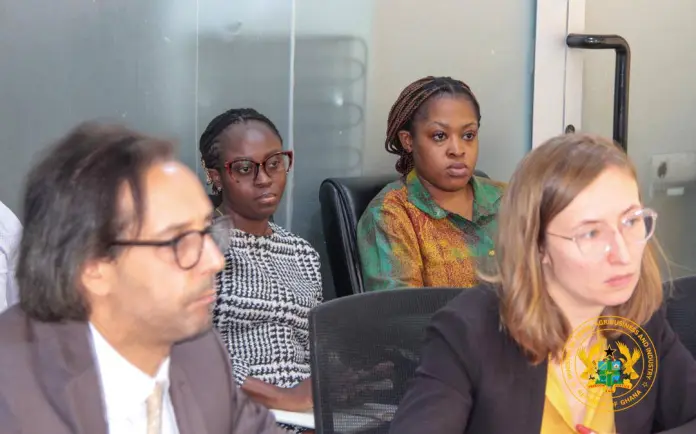By Ghana News
Copyright ghanamma

Ghana’s public debt climbed GH¢15.2 billion in July 2025, marking the second consecutive monthly increase and raising concerns about fiscal discipline under the country’s ongoing International Monetary Fund bailout program.
The Bank of Ghana’s latest Summary of Economic and Financial Data reveals total public debt reached GH¢628.8 billion in July, equivalent to 44.9% of GDP, up from GH¢613.0 billion (43.8% of GDP) in June. This reversal follows months of steady debt reduction from the year’s opening position of over GH¢769 billion.
The uptick occurs as Ghana approaches critical milestones in its three-year Extended Credit Facility arrangement with the IMF, valued at $3 billion. The program has already disbursed approximately $2.3 billion to Ghana, with the most recent $367 million tranche approved in July following the fourth review completion.
Domestic borrowing drove the July increase, with local debt rising to GH¢323.7 billion (23.1% of GDP) from GH¢312.7 billion in June. External debt edged up marginally to GH¢305.0 billion (21.8% of GDP) compared to GH¢300.3 billion (21.4% of GDP) the previous month.
The shift toward domestic financing reflects ongoing challenges in international capital markets, where Ghana remains effectively locked out following its debt restructuring process. This domestic reliance creates ripple effects throughout the local economy, as government borrowing competes with private sector credit needs.
Ghana’s debt trajectory becomes particularly significant against IMF program targets. The country has committed to reducing its debt-to-GDP ratio to sustainable levels, capping it below 55% in present value terms by 2028. While July’s 44.9% figure remains within this threshold, the recent uptick demonstrates how quickly progress can erode.
Government officials previously celebrated reducing the debt-to-GDP ratio from 79.2% in September to 74.6% through successful Eurobond restructuring. However, the recent increases suggest maintaining this downward trajectory requires constant vigilance.
The timing proves delicate for Ghana’s economic recovery narrative. Growth projections for 2025 anticipate output moderating to 4.3% due to fiscal adjustment pressures, creating tensions between debt reduction goals and economic expansion needs.
For Ghana’s private sector, rising domestic debt translates directly into credit market pressures. Higher government demand for local funds typically drives up interest rates, making business expansion financing more expensive and potentially stifling economic growth that could help reduce debt burdens naturally.
The external debt component, while smaller in July’s increase, carries different risks. Ghana requires foreign currency to service these obligations, creating ongoing pressure on the cedi and foreign exchange reserves. Any significant external debt servicing challenges could quickly destabilize the broader economic recovery.
Authorities have enacted a 2025 budget targeting a 1½ percent of GDP primary surplus and adopted enhanced fiscal responsibility frameworks to address program implementation challenges. These measures represent attempts to strengthen fiscal discipline following earlier slippages identified by IMF reviewers.
Ghana’s debt management strategy faces additional complexity from global economic conditions. Rising interest rates in major economies and geopolitical tensions affecting commodity markets create external pressures that could force additional domestic borrowing if revenue targets fall short.
The Bank of Ghana’s data reveals the delicate balance between fiscal consolidation and economic growth that defines Ghana’s current policy environment. While debt levels remain within IMF program parameters, the recent increases serve as early warning signals about fiscal discipline sustainability.
Regional context adds another layer of concern. The African Development Bank projects Ghana’s debt-to-GDP ratio will narrow slightly below 60% by December 2025, but achieving this target requires halting current upward trends and returning to consistent debt reduction.
Market observers note that Ghana’s debt dynamics could influence ongoing negotiations with international creditors and potentially affect future funding arrangements. Sustained increases might complicate discussions about additional support or program modifications.
The July figures underscore fundamental challenges in post-crisis debt management. While Ghana has achieved significant progress from 2022-2023 crisis levels, maintaining this progress requires balancing multiple competing pressures including growth needs, social spending demands, and creditor expectations.
For policymakers, the recent debt increases highlight the narrow margin for error in fiscal management under IMF program constraints. Every spending decision carries implications for debt sustainability and program compliance, creating pressure for continued fiscal discipline even as economic and social demands persist.



